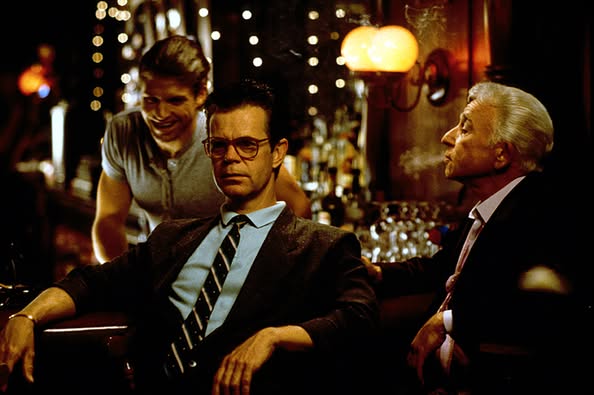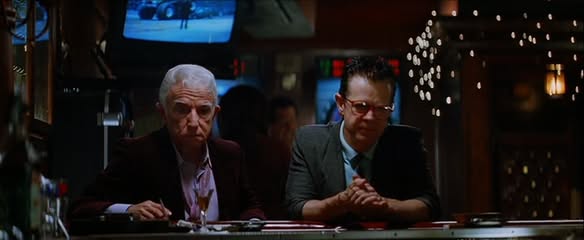Magnolia (1999)

“Magnolia,” directed by Paul Thomas Anderson and released in 1999, is an ambitious and intricate film that weaves together multiple storylines set in Los Angeles. The film explores themes of human connection, coincidence, and the impact of past traumas on present lives. With a sprawling ensemble cast, including Tom Cruise, Julianne Moore, Philip Seymour Hoffman, and John C. Reilly, “Magnolia” intricately connects the lives of its characters in unexpected ways.
The narrative begins to unfold through a series of vignettes featuring diverse characters, each grappling with personal struggles and emotional turmoil. Key storylines include a dying media mogul (Jason Robards) surrounded by his estranged family, a motivational speaker (Cruise) promoting toxic masculinity and self-help, and a lonely police officer (Reilly) who encounters a young girl in distress. As the film progresses, these seemingly unrelated lives intersect, revealing deeper connections and shared experiences.

Anderson’s direction is characterized by a distinctive visual style, employing long takes and dynamic camera movements that create an immersive experience. The cinematography by Robert Elswit captures the film’s emotional intensity, while the use of music—particularly the score by Jon Brion and the inclusion of Aimee Mann’s songs—enhances the film’s themes and emotional weight.
The script is rich with dialogue and introspection, allowing characters to grapple with their vulnerabilities and confront their pasts. Each storyline delves into issues such as guilt, regret, and the search for redemption, creating a tapestry of human experience that reflects the complexities of life.’

Tom Cruise delivers a standout performance as Frank T.J. Mackey, a charismatic but deeply flawed figure whose façade begins to crumble throughout the film. The ensemble cast all contribute powerful performances, adding depth to their characters and emphasizing the film’s exploration of human connection.
“Magnolia” culminates in a surreal and memorable climax, where the film’s themes of coincidence and interconnectedness are brought to the forefront. The film’s ending is both poignant and thought-provoking, leaving viewers with a sense of unresolved questions about fate and the nature of life.

Overall, “Magnolia” is a bold and multifaceted film that challenges conventional storytelling. Its exploration of the human condition, combined with Anderson’s unique vision and an outstanding cast, makes it a significant work in contemporary cinema. The film invites viewers to reflect on the intricacies of life, love, and the connections that bind us all, leaving a lasting impression long after the credits roll.











